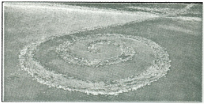题目内容
【题目】阅读理解
The Women's Institute is urging supermarkets to do more to help consumers reduce their home food waste, after a survey of its own membership showed widespread confusion about “best before” and “use by” labeling(标签) on packaging.
Its new analysis of products on supermarket shelves found that “once-opened” instructions were often contradictory and often failed to make clear whether they were a guide to food safety or quality. Only 45% of 5,000 WI members surveyed understood that best-before dates were a sign of food quality, while 26% did not understand that the more important use-by dates were a decisive guide to food safety.
In its report on food waste, the WI said supermarkets were “potentially contributing to home food waste by leading customers to buy more food than they need, and giving conflicting and confusing on-pack information that leaves customers unsure about how long a product remains safe to eat in the home setting”. The 42-page report is part of the WI's ongoing campaign to reduce food waste. To underline the point about conflicting information, it cites(引用) a can of Sainsbury's own-brand sweetcorn advising consumers to eat it within one day of opening, while a similar tin from Waitrose gave consumers two days to finish it. Green Giant sweetcorn, however, has no specified date for eating once opened.
Marylyn Haines Evans, chair of the Women's Institute's public affairs said: “WI members are some of the more informed members of society about food and cookery, but they are still confused about food labelling and 'once-opened' information. So we would like supermarkets to extend the amount of time that consumers have to use a product in their homes by making all of their once-opened instructions on product packaging consistent, and completely remove once-opened instructions on products where food safety is not an issue.”
(1)What mainly leads to food waste according to WI?
A.Poor quality of food.
B.Attractive packaging of products.
C.Competition among supermarkets.
D.Consumers' confusion about on-pack information.
(2)Which of the following can inform you of food safety?
A.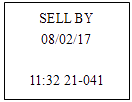
B.
C.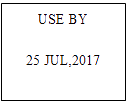
D.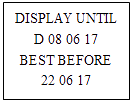
(3)Why are the three supermarkets mentioned in Paragraph 3?
A.To attract more consumers.
B.To compare their products.
C.To comment on their service.
D.To make WI's report convincing.
(4)What does Evans suggest supermarkets do about reducing food waste?
A.Extend life of a product.
B.Turn to well-informed WI members.
C.Give consistent once-opened instructions.
D.Remove instructions on product packaging.
【答案】
(1)D
(2)C
(3)D
(4)C
【解析】本文主要讲述了妇女机构强烈建议超市采取帮助消费者减少食物浪费的措施,比如延长消费者在家中使用产品的时间,使他们所有曾经打开的关于产品包装的说明一致。
(1)细节理解题。根据第二段"Only 45% of 5,000 WI members surveyed understood that best-before dates were a sign of food quality, while 26% did not understand that the more important use-by dates were a decisive guide to food safety."可知,消费者对于食品包装上信息的混淆是导致食物浪费的原因。故选D。
(2)细节理解题。根据第二段"while 26% did not understand that the more important use-by dates were a decisive guide to food safety."可知,use by信息才是食品安全的决定性指导因素。故选C。
(3)细节理解题。根据第三段"To underline the point about conflicting information, it cites(引用) a can of Sainsbury's own-brand sweetcorn"可知,引用超市的例子是为了更好的说明这一问题,即使文章更具说服力。故选D。
(4)细节理解题。根据最后一段"we would like supermarkets to extend the amount of time that consumers have to use a product in their homes by making all of their once-opened instructions on product packaging consistent,"可知,为了减少食物浪费,超市可通过使包装带上的信息一致来达到这一目的。故选C。

 阅读快车系列答案
阅读快车系列答案【题目】阅读理解
The value-packed, all-inclusive sight-seeing package that combines the best of Sydney's harbour, city, bay and beach highlights.
A SydneyPass gives you unlimited and flexible travel on the Explorer Buses: the 'red' Sydney Explorer shows you around our exciting city sights while the ‘blue' Bondi Explorer visits Sydney Harbour bays and famous beaches. Take to the water on one of three magnificent daily harbour cruises (游船). You can also travel free on regular Sydney Buses, Sydney Ferries or CityRail services (limited area), so you can go to every corner of this beautiful city.
Imagine browsing at Darling Harbour, sampling the famous seafood at Watsons Bay or enjoying the city lights on an evening ferry cruise. The possibilities and plans are endless with a SydneyPass. Wherever you decide to go, remember that bookings are not required on any of our services so tickets are treated on a first in, first seated basis.
SydneyPasses are available for 3, 5 or 7 days for use over a 7-calendar-day period. With a 3 or 5-day pass you choose on which days out of the 7 you want to use it. All SydneyPasses include a free Airport Express inward trip before starting your 3, 5 or 7 days, and the return trip is valid (有效的) for 2 months from the first day your ticket was used.
SydneyPass Fares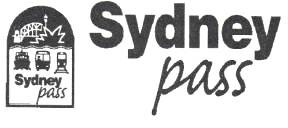
Adult | Child* | Family** | |
3-day ticket | $90 | $45 | $225 |
5-day ticket | $120 | $60 | $300 |
7-day ticket | $140 | $70 | $350 |
*A child is defined as anyone from the ages of 4 years to under 16 years. Children under 4 years travel free.
**A family is defined as 2 adults and any number of children from 4 to under 16 years of age from the same family.
(1)A SydneyPass doesn't offer unlimited rides on ________.
A.the Explorer Buses
B.the harbour cruises
C.regular Sydney Buses
D.CityRail services
(2)With a SydneyPass, a traveller can ________.
A.save fares from and to the airport
B.take the Sydney Explorer to beaches
C.enjoy the famous seafood for free
D.reserve seats easily in a restaurant
(3)If 5-day tickets were to be recommended to a mother who travelled with her colleague and her children, aged 3, 6 and 10, what would the lowest cost be?
A.$225.
B.$300.
C.$360.
D.$420.


